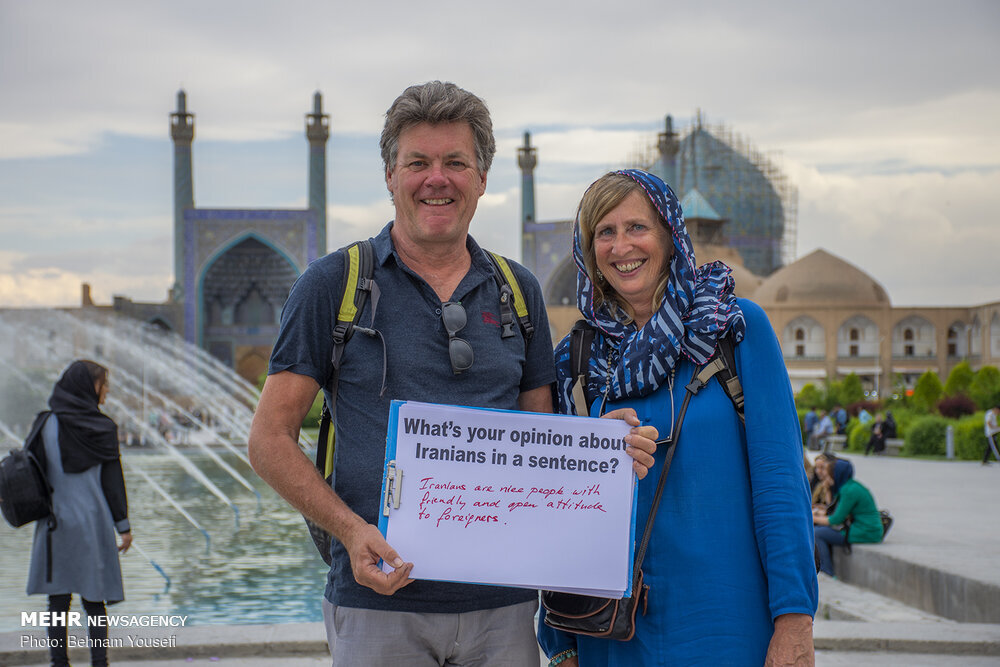Iran ranked 19th in tourism contribution to GDP

TEHRAN - Iran ranked 19th out of 185 countries in the 2021 Travel & Tourism Total Contribution to GDP Index, according to a biennial report released by the World Travel & Tourism Council (WTTC).
The Islamic Republic comes 19th with $48.1 billion in the 2021 Travel & Tourism Total Contribution to GDP Index, standing between South Korea and Switzerland, which were ranked 18th and 20th with GDP contributions of $48.8 billion and $44.5 billion, respectively.
The U.S., China, Germany, Japan, and Italy were named the top five countries of the same index. The figures from WTTC, which represents the global Travel & Tourism private sector, come from its 2021 Economic Impact Report (EIR), which lays bare the devastating impact of COVID-19 travel restrictions.
Earning $33.3 billion, Iran was ranked 16th in the 2021 index for Domestic Visitor Spending, standing between Russia and the Philippines, which fetched $39.6 billion and 32.8 billion correspondingly.
In 2019, Iran was ranked 17th in the same index, with $37.1 billion of income generated by the domestic visitor spending.
Gloria Guevara, WTTC President & CEO, said: “With positive news from across Europe about the gradual reopening of borders, we hope to see many more countries adopt a more risk-based approach.” This will restore mobility safely through rapid testing and health and hygiene protocols, in addition to the benefit of the vaccination rollout, she explained.
“The urgent need to restore international travel is starkly evident following the release of WTTC’s data, which shows the global Travel & Tourism sector suffered disproportionately hard due to the pandemic.”
Globally, countries experienced an average fall in GDP contribution of 49.1%, while the worldwide economy shrank by just 3.7% last year, showing how travel restrictions have dramatically reduced Travel & Tourism’s contribution to economies around the world, Guevara said.
“We believe this shows that understandable but misguided actions to curb COVID-19 with ineffective damaging travel restrictions such as quarantines, do more harm than good, and end up crushing the very economies they were designed to protect.”
Iran recorded some three million foreign tourist arrivals over the past 12 months as many pandemic entry restrictions were eased, according to data compiled by the Ministry of Cultural Heritage, Tourism and Handicrafts. Last September, the Islamic Republic initiated preliminary steps for a bounce-back, restarting the issuance of tourist visas following a 20-month hiatus, and easing COVID-19 protocols for fully vaccinated passengers.
“Domestic travel has achieved some 40 percent increase compared to the pre-coronavirus period,” the tourism ministry said earlier this year.
More than 56 million passengers used buses for their overland journeys across Iran during the past Iranian calendar year (ended March 20).
Data compiled by the Road Maintenance and Transportation Organization indicates that 103,364,000 passengers used overland public transportation during the past Iranian year 1400, Mehr reported.
Some half of the figure, which counts 56,453,000 passengers, opted to travel by busses for their domestic journeys, the organization said.
Before the COVID pandemic, Iran tourism had constantly been growing, reaching more than eight million visitors in the Iranian calendar year 1398 (started March 21, 2019). That surge, however, helped prejudices to become thick and thin.
However, Iran’s trump card is that the country benefits from a wide variety of travel destinations ranging from seacoasts and lush green woods to towering mountains and harsh deserts. As a wallet-friendly destination with hospitable people, Iran has long been a desired destination for nature lovers, birdwatchers, powder chasers, culture devotees, pilgrims, museum-goers, foodies, adventurers, and medical travelers, to name a few.
Mass COVID-19 vaccinations, consecutive fam tours for foreign tour operators, easing travel procedures, and fresh strategies, altogether, suggest Iran is determined to experience a tourism rebound with a greater reliance on its numerous tourist spots of which 26 are UNESCO World Heritage, and above all, its welcoming people.
AM
Leave a Comment